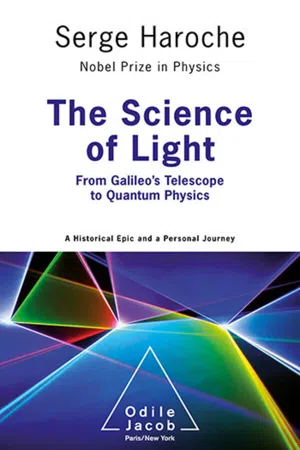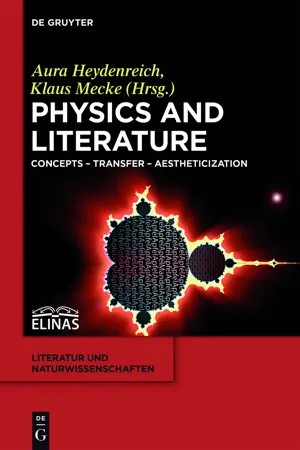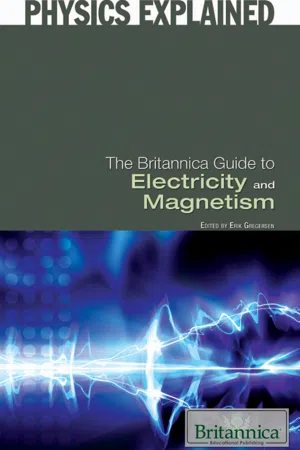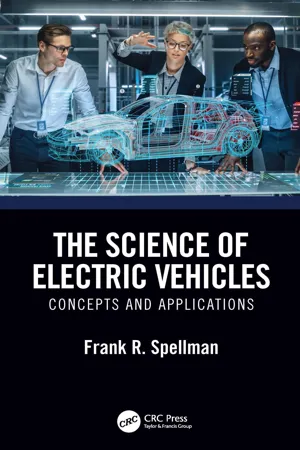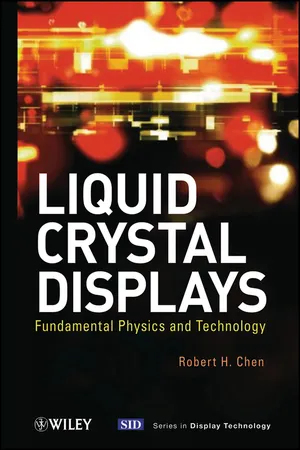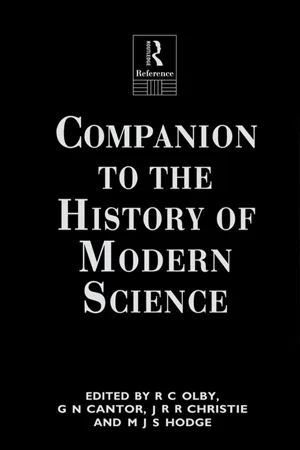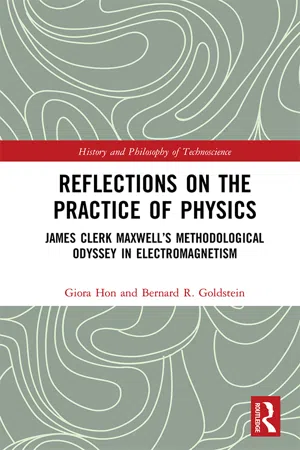Physics
Oersted's Experiment
Oersted's Experiment demonstrated the relationship between electricity and magnetism. In 1820, Hans Christian Oersted observed that a current-carrying wire caused a nearby compass needle to deflect, indicating a magnetic field was produced by the current. This discovery laid the foundation for the development of electromagnetism and the understanding of the interplay between electricity and magnetism.
Written by Perlego with AI-assistance
Related key terms
Related key terms
1 of 4
Related key terms
1 of 3
7 Key excerpts on "Oersted's Experiment"
- eBook - ePub
The Science of Light
From Galileo's Telescope to Quantum Physics
- Serge Haroche(Author)
- 2022(Publication Date)
- Odile Jacob(Publisher)
What became of Romagnosi’s paper is a mystery. No trace of it has survived besides the date of its receipt in the Academy’s correspondence log: no report was written on it, and of course no prize was awarded to it. Was it lost, or perhaps rejected because it opposed the then-dominant theory of electricity and magnetism in enigmatic terms? Largely ignored by the scientific community, Romagnosi’s work is known only from a succinct and imprecise account he gave a few years later in a Trento newspaper. It was not until eighteen years later, in 1820, that a fundamental experiment by the Danish physicist Hans Christian Ørsted unequivocally established a link between electricity and magnetism. He showed that a magnetized needle, oriented parallel to a horizontal metal wire, tended to orient itself perpendicular to the wire as soon as the circuit was connected to the terminals of a voltaic pile. He found that the transverse force acting on the needle changed sign depending on whether it was above or below the wire, thus showing that the magnetic forces exerted by the current wound in circles in planes normal to the conducting wire, the direction of these forces being reversed with that of the current. The phenomenon discovered by Ørsted was soon used in the galvanometer, an instrument that measures the intensity of the current in a circuit by its influence on the direction of a magnetic needle placed in its vicinity.News of Ørsted’s experiment, related with the precision lacking in Romagnosi’s dissertation, quickly made its way around Europe. The Academician Arago, who had attended a demonstration of the experiment in Geneva, mentioned it to André-Marie Ampère, then professor at the École Polytechnique. Despite the bias he had inherited from his mentor, Coulomb, against any connection between electricity and magnetism, Ampère decided to repeat Ørsted’s experiment and generalize it to other cases. He showed that a current flowing through a wire not only exerted a magnetic force on a magnet, but also attracted another parallel wire with a current flowing in the same direction, repelling that wire if the currents were in opposite directions. He experimented at his Parisian home on an apparatus combining electrical circuits with a scale to measure the forces acting on wire segments. This device, very simple in principle, is currently on display in the faculty room of the Collège de France, where Ampère was appointed to a physics chair in 1824. - eBook - ePub
Physics and Literature
Concepts – Transfer – Aestheticization
- Aura Heydenreich, Klaus Mecke, Aura Heydenreich, Klaus Mecke(Authors)
- 2021(Publication Date)
- De Gruyter(Publisher)
Ørsted stumbled upon the proof of this affinity when he noticed that a current-carrying wire deflected a nearby compass needle. He also realized that the needle would point in the opposite direction whether it was above or below the wire. This strange behavior greatly intrigued the scientific community because it indicated the existence of a different kind of attraction and repulsion that did not simply follow a straight line, as in Newton’s law of universal gravitation, but that operated through a kind of circular action. Ørsted argued that the electric current generated a magnetic effect in its vicinity spiraling along the length of the wire. He coined the adjective electromagnetic to characterize the new type of circular influence manifested by the interaction of the current-carrying wire and the compass needle (1998 ; Caneva 2005, 176–183). Ørsted’s experimental proof of the connection between electricity and magnetism gave birth to a new field of research, electromagnetism, prompted by the necessity of studying the two forces together. In 1821, Michael Faraday (1791–1867) provided an empirical validation of Ørsted’s idea of circular action spiraling along the current-carrying wire by inventing a new type of transformational motor. Faraday used mercury, a liquid conductor, to design a flexible electrical circuit, and succeeded in making a current-carrying wire rotate about a magnet, and vice-versa. In addition to clearly illustrating the circular nature of the newly found electromagnetic attraction, Faraday’s experiment displayed the first electromagnetic motor by showing that the interaction of an electric current and a magnet could produce a steady movement. The steady movement resulting from the interaction of an electric current and magnetism suggested that the reverse effect was also possible and, throughout the 1820s, researchers looked for a way to convert movement and magnetism into an electric current - Britannica Educational Publishing, Erik Gregersen(Authors)
- 2010(Publication Date)
- Britannica Educational Publishing(Publisher)
Once Ørsted’s experiment had revealed that electric currents have magnetic effects, scientists realized that there must be magnetic forces between the currents. They began studying the forces immediately. A French physicist, François Arago, observed in 1820 that an electric current will orient unmagnetized iron filings in a circle around the wire. That same year, another French physicist, André-Marie Ampère, developed Ørsted’s observations in quantitative terms. Ampère showed that two parallel wires carrying electric currents attract and repel each other like magnets. If the currents flow in the same direction, the wires attract each other; if they flow in opposite directions, the wires repel each other. From this experiment, Ampère was able to express the right-hand rule for the direction of the force on a current in a magnetic field. He also established experimentally and quantitatively the laws of magnetic force between electric currents. He suggested that internal electric currents are responsible for permanent magnets and for highly magnetizable materials like iron. With Arago, he demonstrated that steel needles become more strongly magnetic inside a coil carrying an electric current. Experiments on small coils showed that, at large distances, the forces between two such coils are similar to those between two small bar magnets and, moreover, that one coil can be replaced by a bar magnet of suitable size without changing the forces. The magnetic moment of this equivalent magnet was determined by the dimensions of the coil, its number of turns, and the current flowing around it.William Sturgeon of England and Joseph Henry of the United States used Ørsted’s discovery to develop electromagnets during the 1820s. Sturgeon wrapped 18 turns of bare copper wire around a U-shaped iron bar. When he turned on the current, the bar became an electromagnet capable of lifting 20 times its weight. When the current was turned off, the bar was no longer magnetized. Henry repeated Sturgeon’s work in 1829, using insulated wire to prevent short-circuiting. Using hundreds of turns, Henry created an electromagnet that could lift more than one ton of iron.- eBook - ePub
The Science of Electric Vehicles
Concepts and Applications
- Frank R. Spellman(Author)
- 2023(Publication Date)
- CRC Press(Publisher)
Mho, which is ohm spelled backward. The relationship that exists between resistance and conductance is the reciprocal. A reciprocal of a number is obtained by dividing the number by one. If the resistance of a material is known, dividing its value by one will give its conductance. Similarly, if the conductance is known, dividing its value by one will give its resistance.Electromagnetism
Earlier, fundamental theories concerning simple magnets and magnetism were presented. Those discussions dealt mainly with forms of magnetism that were not related directly to electricity—permanent magnets for instance. Further, only brief mention was made of those forms of magnetism having direct relation to electricity—producing electricity with magnetism for instance.In medicine, anatomy and physiology are so closely related that the medical student cannot study one at length without involving the other. A similar relationship holds for the electrical field; that is, magnetism and basic electricity are so closely related that one cannot be studied at length without involving the other. This close fundamental relationship is continually borne out in the study of generators, transformers, battery packs, and motors. To be proficient in electricity, we must become familiar with such general relationships that exist between magnetism and electricity as follows:- Electric current flow will always produce some form of magnetism.
- Magnetism is by far the most commonly used means for producing or using electricity.
- The peculiar behavior of electricity under certain conditions is caused by magnetic influences.
Magnetic Field Around a Single Conductor
In 1819, Hans Christian Oersted, a Danish scientist, discovered that a field of magnetic force exists around a single wire conductor carrying an electric current. In Figure 3.15 , a wire is passed through a piece of cardboard and connected through a switch to a dry cell. With the switch open (no current flowing), if we sprinkle iron filings on the cardboard then tap it gently, the filings will fall back haphazardly. Now, if we close the switch, current will begin to flow in the wire. If we tap the cardboard again, the magnetic effect of the current in the wire will cause the filings to fall back into a definite pattern of concentric circles with the wire as the center of the circles. Every section of the wire has this field of force around it in a plane perpendicular to the wire, as shown in Figure 3.16 - eBook - ePub
Liquid Crystal Displays
Fundamental Physics and Technology
- Robert H. Chen(Author)
- 2011(Publication Date)
- Wiley(Publisher)
Solidly ingenious as it was, in order to explain what the experimentalists Oersted, Ampere, and Faraday had observed in Nature and experiments, it also was clear that this mechanical beast was going to be very difficult to tame. Indeed, the intricate pas de deux of electromagnetic forces at the time was clearly observed but only murkily understood. One force apparently engenders another force, but the generation clearly was not acting in the line through the distance between the bodies producing those forces. In a vain attempt to tie the forces, the construction of springs, flywheels, balls, and interconnecting water pipes, ropes, pulleys, and gears became just too complicated and contrived to attain the simplicity and elegance sought by a mathematical theoretician like Maxwell. But worst of all, the bits and pieces could not hope to operate to produce electromagnetic forces in a vacuum; the mechanical theory still relied upon the ethereal yet ubiquitous æther and all its attendant mystery. If Maxwell was to overcome the æther’s dark art, he needed the power of mathematical physics to smite that ævil witch. Figure 2.1 Maxwell’s electromagnetic mechanical machine. From Mahon, B. 2003. The Man Who Changed Everything, The Life and Times of James Clerk Maxwell, Wiley, p. 100. Faraday’s Intuitive Field The untenable complications wrought by the purely mechanistic and æther-laden action at a distance were unraveled by the great experimentalist Faraday. Having had little formal education, Faraday was not equipped to use mathematical physics to describe what he observed; instead he depended on his (considerable) powers of intuition. To start off, a point charge (q) acted upon by an electric force (E) will experience a mechanical force (F) described simply by the equation F = qE, where the force is directly proportional to, and in the same direction as, the electric force - eBook - ePub
- G N Cantor, G.N. Cantor, J.R.R. Christie, M.J.S. Hodge, R.C. Olby(Authors)
- 2006(Publication Date)
- Routledge(Publisher)
vis viva, became the doctrine of energy conservation. (See art. 21.) But its inspiration in the nineteenth century derived largely from qualitative discoveries aimed at revealing directly the unity of nature: the voltaic pile by Volta (1800), electromagnetism by Oersted (1820) and electromagnetic induction by Faraday (1831). These phenomena seemed to display interconversions from one form of power to another: chemical to electrical, electrical to magnetic and magnetic back to electrical. Hans Christian Oersted (1777–1851) and Michael Faraday (1791–1867), in particular, pursued their researches on interconversion with conscious commitment to the unity of all natural powers, to the belief that all physical forces are but manifestations of a fundamental conserved ‘force’.Although variously based, such doctrines found particularly consistent expression in German Naturphilosophie and related idealist schemes, in which the powers of nature were seen as realisations of the powers of mind and ultimately of God’s power, or of Idea in general. (See art. 56, sect. 2.) The tradition of atoms and forces had made atoms real and force the relation of them, so that force did not exist in space, but only where it acted on matter. By contrast, the Naturphilosophie of the later Kant, and of Schelling and Hegel, made force – as natural power – the essential reality and matter a phenomenal manifestation of it. To advocates of point atoms, space was empty; to Natur-philosophen, it was a plenum of force, in which a point atom could possess only geometrical significance, as the centre of a distribution of force. Thus, to Oersted, the power of an electric current did not exist in the wire which served as its axis but in the space surrounding the wire. Faraday, in a similar fashion, regarded molecules as force distributions, although his debt to Naturphilosophie appears tenuous.Forces, in the sense of interconvertible powers, had two noteworthy characteristics: polarity, which gave them their dynamic character, and a quantity-intensity duality, which gave them their descriptive adequacy. With his famous language of ‘lines of force’, Faraday transformed these characteristics into a powerful new theory of ‘fields’. An electric line of force represented a polar axis, with its opposite ends constituting plus and minus electricity. No electrical particles or fluids existed, but still Faraday could speak of one electricity ‘inducing’ the other by ‘contiguous action’ along the lines of induction. Magnetic lines represented a similar state of polarisation, although they formed closed loops with no terminations, so that northern and southern fluids had no corollary. - eBook - ePub
Reflections on the Practice of Physics
James Clerk Maxwell's Methodological Odyssey in Electromagnetism
- Giora Hon, Bernard R. Goldstein(Authors)
- 2020(Publication Date)
- Routledge(Publisher)
29 In this way Maxwell could compare directly the contributions of Faraday with those in the great tradition of the continental physicists. Maxwell first described the limitations of Faraday’s skills in traditional mathematics:Faraday, with his penetrating intellect, his devotion to science, and his opportunities for experiments, was debarred from following the course of thought which had led to the achievements of the French philosophers, and was obliged to explain the phenomena to himself by means of a symbolism which he could understand, instead of adopting what had hitherto been the only tongue of the learned.This new symbolism consisted of those lines of force extending themselves in every direction from electrified and magnetic bodies, which Faraday in his mind’s eye saw as distinctly as the solid bodies from which they emanated.30As we have seen, Faraday introduced the concept of lines of force in response to the question, How is force transmitted through space? Maxwell analyzed Faraday’s imaginative leap. The idea takes as its point of departure the observed distribution of iron filings subject to a magnetic field. This observation was not new but it was previously regarded, in Maxwell’s words, “as an interesting curiosity of science.” At this juncture Maxwell quoted directly from Faraday’s Experimental Researches :It would be a voluntary and unnecessary abandonment of most valuable aid if an experimentalist, who chooses to consider magnetic power as represented by lines of magnetic force, were to deny himself the use of iron filings. By their employment he may make many conditions of the power, even in complicated cases, visible to the eye at once, may trace the varying direction of the lines of force and determine the relative polarity … By their use probable results may be seen at once, and many a valuable suggestion gained for future leading experiments.31
Index pages curate the most relevant extracts from our library of academic textbooks. They’ve been created using an in-house natural language model (NLM), each adding context and meaning to key research topics.
Explore more topic indexes
Explore more topic indexes
1 of 6
Explore more topic indexes
1 of 4
